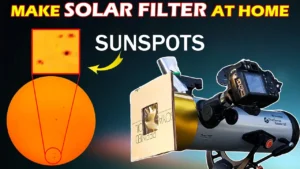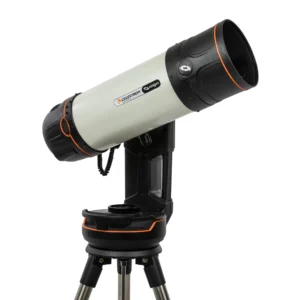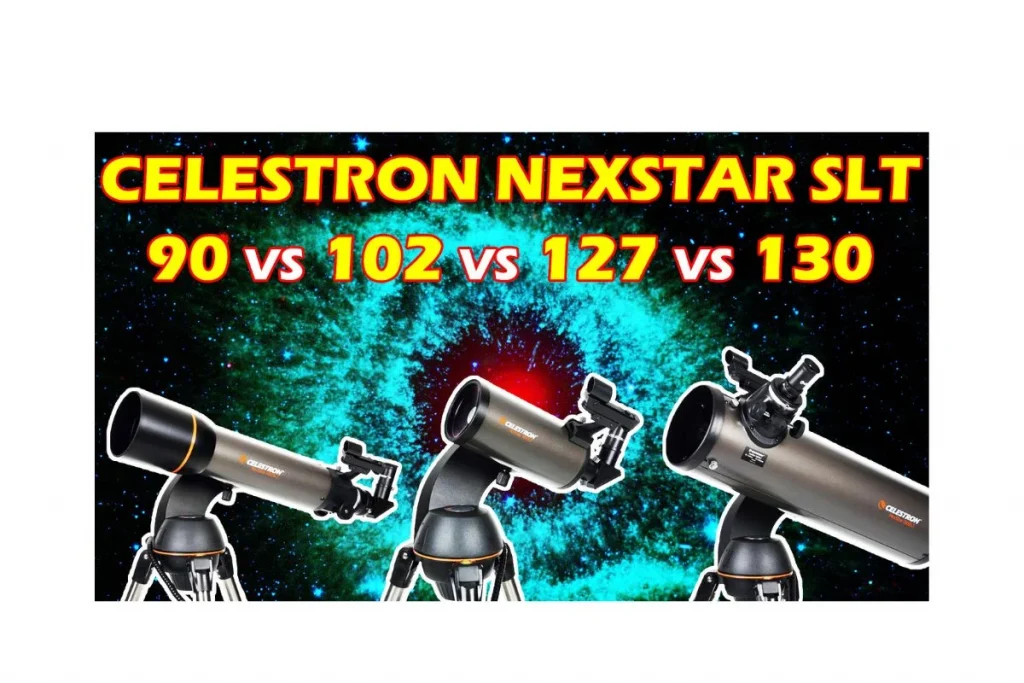
In one of the previous articles, we saw Celestron NextStar 4-SE,6-SE & 8-SE telescopes. There is one more series of telescopes by Celestron known as Celestron NexStar SLT. SLT here means ‘Star Location Telescopes’. The telescopes in this series are aimed at beginner to intermediate levels of astronomers.
There are 4 telescopes in this SLT series, 90-SLT, 102-SLT, 127-SLT & 130-SLT. All the telescopes from this series have top-quality optics which you would normally get with more advanced telescopes and also one of the main features of these telescopes is the mount.
The computerized mount uses the proprietary Celestron Star Align feature which makes the stargazing process much more enjoyable and easy.
The main difference between these telescopes is the aperture size. 90-SLT has a 90mm aperture, 102-SLT has a 102mm aperture, 127-SLT has a 127mm aperture & 130-SLT has a 130mm aperture.
What does 90-SLT have to offer?
It is the cheapest and the smallest telescope from this series of Celestron. It is a Maksutov-Cassegrain-type telescope with a focal length of 1250mm. Its aperture is 90mm and it has a focal ratio of 14. It has a computerized go-to mount, so setting up this telescope will not take more than 5 minutes.
The computerized mount comes with a database of 4000 celestial objects. With sky align technology it is very easy to point the telescope & lock on the object which you wish to observe. It makes this telescope perfect for beginners.
With this telescope you can observe the lunar surface, Venus and its phases, polar caps on Mars, Jupiter and its four moons
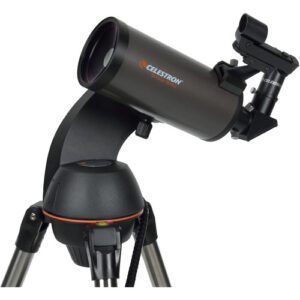
The Next telescope in this series is 102-SLT.
This is a compact beginner telescope. It is an achromatic refractor telescope with a focal length of 660mm. Its aperture is 102mm and has a focal ratio of 6.5. This telescope also comes with a computerized mount with a database of 4000 celestial objects.
When compared with the 90-SLT this telescope has a bigger aperture and because of that, it collects 63%more light than 90-SLT. This means when you look beyond the moon with this telescope you’ll see much brighter images of planets.
With this telescope, you can see all the objects which you can see with 90-SLT but they will be bright and clear. When the skies are clear, you can also see deep space objects like nebulae or the spiral arms of the whirlpool galaxy but don’t expect too much from this telescope for deep space stargazing.
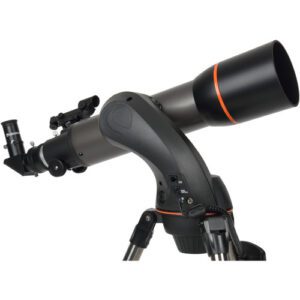
The Next telescope in this series is 127-SLT.
If you’re looking for an affordable telescope to view the solar system and bright deep-sky targets, then the Celestron NexStar 127 SLT is a great option. This telescope has everything that an amateur astronomer would need. This is a Maksutov-Cassegrain telescope with a
5-inch aperture. It has a focal length of 1500mm and a focal ratio of 12. This telescope weighs just 8.3 kg, so it’s very easy to carry around. Especially for those people, who enjoy stargazing in their garden as well as traveling to other low light dark sites. This telescope also comes with a computerized Alt-azimuth mount with a database of 4000 celestial objects. It is easy to set up and align this telescope.
Unfortunately, this telescope does have a small drawback, the telescope is quite heavy for the mount it comes with. It will never fall off from the mount but the upper part of the telescope is heavy because of this when you move the telescope the mount vibrates. Every time you move the telescope you will have to focus on the sky again because of the vibrating mount. But by making some adjustments like using anti-vibration pads, you will be able to minimize these things completely.
You can see details of the lunar surface, Venus and its phases, polar caps on Mars, Jupiter and its four moons, Saturn with its rings visible, and much more.
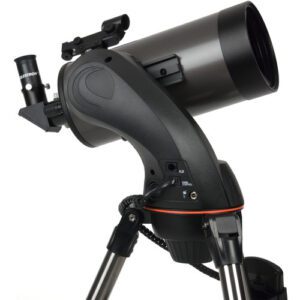
The Last telescope in this series is 130-SLT.
This is a Newtonian refractor-type telescope with a 5.1-inch aperture. It has a focal length of 650mm and a focal ratio of 5. Its weight is the same as the 127-SLT telescope. This telescope comes with a computerized Alt-azimuth mount and is very easy to set up. As the telescope has a bigger aperture it can collect 35% more light than 102-SLT. This gives you brighter and clearer images. This telescope comes with 2 eyepieces. One is a 25mm Plossl eyepiece which gives 26X magnification and the other is a 9mm Plossl eyepiece which gives 72X magnification.
This telescope also has a similar minor issue of the mount as 127-SLT. Other than that this telescope is a fine entry-level telescope that will introduce you to the realm of deep space objects.
With 130-SLT you can see details of the lunar surface, the rings of Saturn, the polar ice caps on Mars, the cloud belts on Jupiter, or a number of the Messier objects such as the globular cluster in Hercules (M13), or the Great Nebula in Orion (M42).
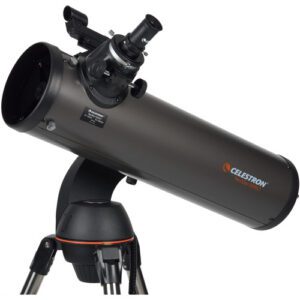
So that’s it, this is what Celestron’s SLT (Star Location Telescope) series offer you. We hope this article helped you to understand this SLT series telescopes of Celestron to make a better buying decision. You can also find the best suitable telescope for you with our telescope suggestion tool.
NexStar 90SLT | NexStar 102SLT | NexStar 127SLT | NexStar 130SLT | |
Aperture | 90mm (3.54″) | 102mm (4.02″) | 127mm (5″) | 130mm (5.12″) |
Focal Length | 1250mm (49″) | 660mm (26″) | 1500mm (59″) | 650mm (26″) |
Focal Ratio | f/14 | f/6.47 | f/12 | f/5 |
Optical Design | Maksutov-Cassegrain | Refractor | Maksutov-Cassegrain | Newtonian Reflector |
Weight | 15.5 lbs (7.03 kg) | TBD | 19 lbs (8.6 kg) | |
What can you see | Lunar surface, | Planets, Moon, | lunar surface, Venus and its phases, | Craters on the moon, |
PRICE |



